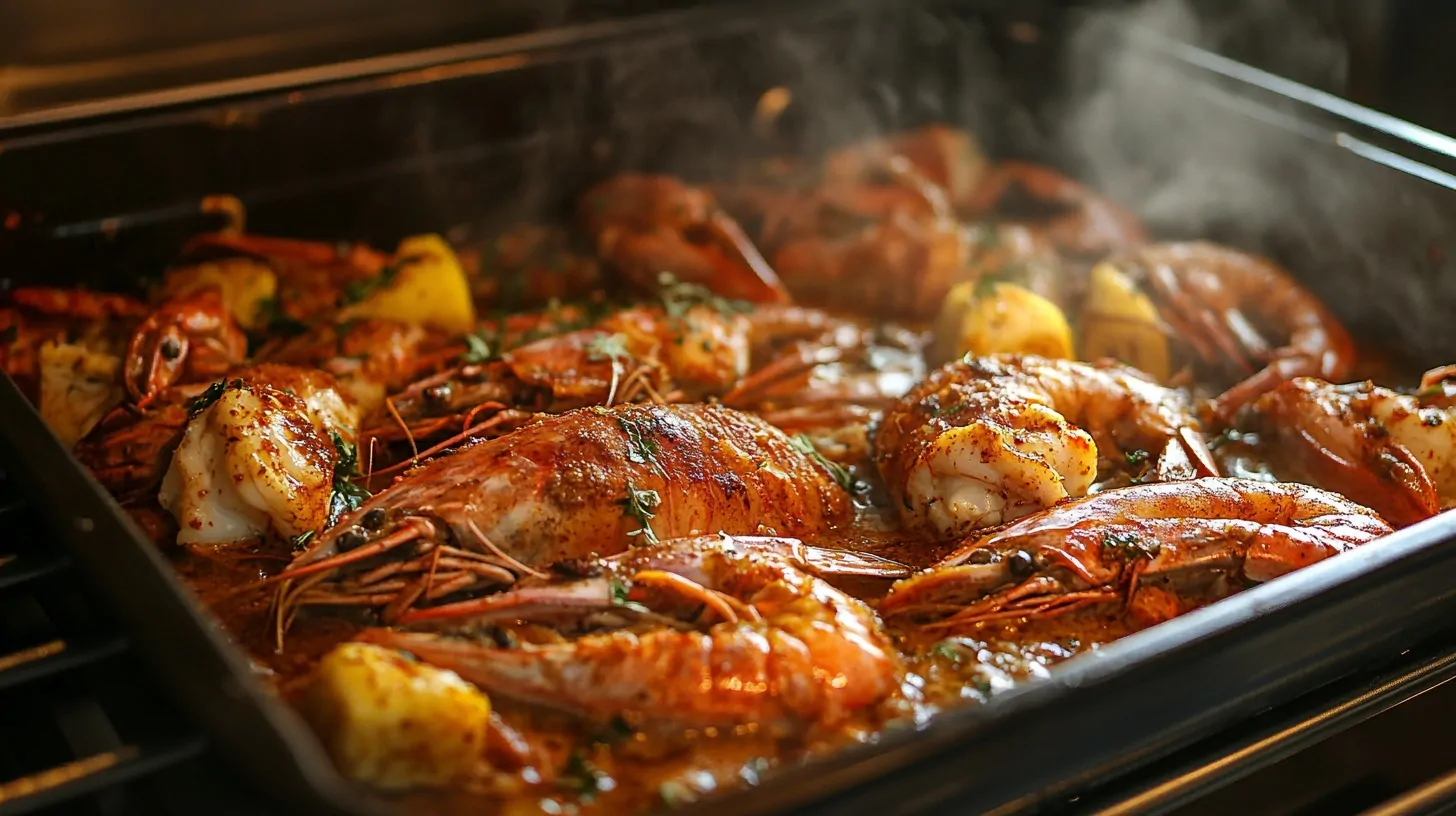Seafood boils are one of life’s greatest pleasures—bursting with flavors, spices, and the taste of the ocean. But reheating leftovers? It can be tricky.
Done wrong, the tender shrimp turns rubbery, the crab legs lose their juicy goodness, and the potatoes?
Forget it. The good news is, with the right techniques, you can enjoy your seafood boil a second time around without sacrificing the flavors and textures you love.
Let me share my favorite methods that work like magic. You won’t need a culinary degree or fancy gadgets—just a little love for seafood and some basic kitchen tools.
Method 1: Steaming for Succulent Results

Steaming gently heats your seafood without losing the juices that make it special. I love how this method keeps everything tasting fresh and tender, as if it just came off the boil. It’s particularly great for delicate items like shrimp and mussels, which can easily overcook using harsher methods.
Plus, the added steam refreshes the seasonings, bringing out all those mouthwatering flavors that might have settled overnight.
To enhance the flavor of your reheated seafood boil, consider preparing a homemade seafood stock to use during the reheating process. This addition can elevate the taste and moisture of your dish.
What You’ll Need:
- A pot with a steamer basket or colander
- Water
- Aluminum foil (optional)
Steps:
- Fill the pot with about two inches of water.
- Place your steamer basket or colander inside.
- Arrange the seafood boil leftovers in the basket. Cover with foil for extra moisture retention.
- Bring the water to a simmer and steam for 8–10 minutes.
Pro Tip: Add a slice of lemon or a splash of white wine to the water for a fresh aroma.
Method 2: The Oven for Big Batches

The oven shines when you’re reheating a family-sized portion or a big batch for game night. It ensures the entire mix is evenly heated without leaving cold spots or overcooking smaller pieces.
I’ve found it’s perfect for reheating potatoes, corn, and sausage alongside your seafood since the foil traps steam, keeping everything moist and flavorful. Just imagine the aroma wafting through your kitchen as the seasonings warm up again!
Tools You’ll Need:
- A baking dish or tray
- Aluminum foil
Steps:
- Preheat the oven to 275°F (135°C).
- Spread the seafood boil in a baking dish. Add a little broth or water to keep things moist.
- Cover the dish with foil to lock in steam.
- Heat for about 15–20 minutes, checking halfway through to avoid overcooking.
Method 3: Sautéing for That Fresh-Cooked Vibe

Sautéing brings an added layer of flavor to your leftovers, almost like you’re cooking them fresh. The butter or oil creates a luscious coating that enhances the spices and caramelizes the sausage and potatoes for extra yumminess.
If you’re in a hurry but still want to impress, this method is your go-to. I like to toss in a bit of fresh garlic or parsley at the end for a boost that makes the leftovers feel elevated.
What You’ll Need:
- A large skillet or pan
- Butter or oil
Steps:
- Heat the skillet on medium. Add a bit of butter or oil.
- Toss in the seafood boil leftovers and stir gently.
- Cook for about 5–7 minutes, ensuring everything heats evenly.
Bonus Tip: Sprinkle some Old Bay seasoning or garlic for an extra flavor boost.
Method 4: Boiling in a Bag
Boiling in a bag feels like reviving your seafood boil to its original glory. The technique locks in all the flavors while heating everything evenly, and the best part? No extra dishes to wash!
The seafood stays juicy, and the spices get reactivated as they mingle in the heat. Whenever I use this method, it’s like opening a delicious time capsule of last night’s feast.
What You Need:
- A resealable, heat-safe plastic bag
- A pot of water
Steps:
- Transfer the seafood boil to the bag, making sure it’s sealed tightly.
- Bring a pot of water to a gentle boil.
- Submerge the bag in the water for 10–15 minutes.
Why It Works: The bag keeps moisture in and prevents your seafood from drying out.
Method 5: The Microwave for Quick Fixes
Here’s What Helps:
- A microwave-safe bowl
- A damp paper towel or microwave cover
Steps:
- Arrange the leftovers in the bowl. Add a splash of water or broth.
- Cover with a damp paper towel to keep moisture in.
- Heat on medium power in 30-second intervals, stirring occasionally.
Warning: Avoid high power settings—they’ll zap the life out of your seafood.
My Favorite Way
Personally, I swear by steaming. It’s simple, foolproof, and delivers a texture that’s close to fresh.
And let’s face it, seafood boils are meant to be enjoyed in all their juicy glory.
Reheating seafood boil leftovers isn’t rocket science—it’s about treating them with care.
So, next time you have a feast, save those extras with confidence, knowing they’ll be just as tasty the second time around.
Which method are you going to try first? Let me know how it turns out!

